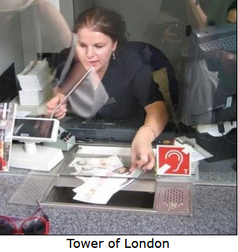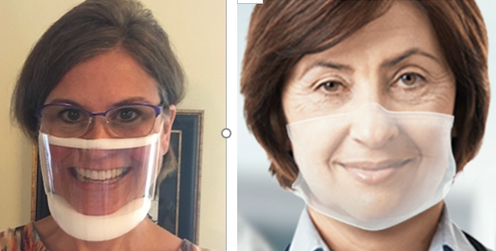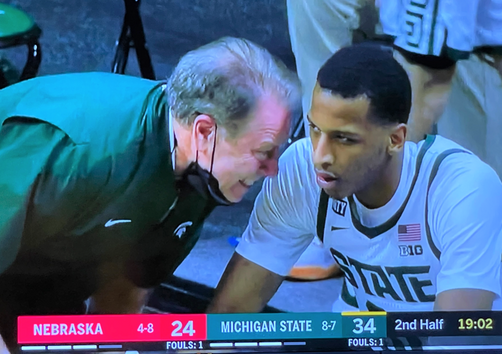-
About
Our Story
back- Our Mission
- Our Leadershio
- Accessibility
- Careers
- Diversity, Equity, Inclusion
- Learning Science
- Sustainability
Our Solutions
back
-
Community
Community
back- Newsroom
- Webinars on Demand
- Digital Community
- The Institute at Macmillan Learning
- English Community
- Psychology Community
- History Community
- Communication Community
- College Success Community
- Economics Community
- Institutional Solutions Community
- Nutrition Community
- Lab Solutions Community
- STEM Community
- Newsroom
Hearing in a Face-Masked World
- Subscribe to RSS Feed
- Mark as New
- Mark as Read
- Bookmark
- Subscribe
- Printer Friendly Page
- Report Inappropriate Content
At a May 26 Rose Garden press conference, President Trump asked a face-masked reporter: “Can you take it off, because I cannot hear you.”
On this matter, I can empathize with our president. At a recent dental appointment, I could understand but half my hygienist’s and dentist’s spoken words. Despite being a person with hearing loss, I normally hear them both with ease, thanks to our proximity. But when muffled by their masks and face shields, their words became indistinct. One speech researcher explains that the thicker fabrics of many home-made masks are especially likely to “significantly block the airstream, diminishing the acoustic energy.”
Although I wouldn’t have it otherwise—they and other caregivers are protecting their patients, and protecting themselves from their patients—masks do impede accessibility. More than we realize, we are all natural lip readers. Even a normal-hearing friend, visiting an ice cream shop, could not make out the masked clerk’s words: “Cup or cone”? Another acquaintance, during a hospital ER visit, reporting understanding only about half of what the masked nurses and doctors said to her.
In the fully masked classrooms of my campus, colleagues tell me that, for example, “I have found myself asking students to repeat their questions.” Another colleague says “I am using my outside voice,” which takes more energy (and which other colleagues report leaves them drained). Another reports that “It is frustrating to continue to ask a student to repeat something and I fear it will shut down discussion and make most classes a lecture performance—in which case I might as well go completely online.” Another has, while the weather allows, taken his class outdoors where, socially distanced, they can see facial expressions and lip-read one another, mask-free.
The essential lesson: There is more to hearing than meets the ears. What our eyes see influences what our brain hears. That phenomenon, which you can experience here, is called the McGurk effect.
Moreover, thanks to our powers of instantly reading facial expressions, much of our communication is nonverbal. We share our emotions through our words but also through our smiles, our tight lips, our gaping mouths. Even our emojis vary the mouth: :- ( and :- ) . One colleague explains: “It adds a barrier that feels formal and inaccessible when you can't shake someone's hand, and then you can't smile at them to say ‘but I still want to get to know you.’” Cut off from facial expression, our communication is hampered.
So is face recognition. With students’ faces masked, colleagues report becoming partially face-blind. They’re not only having more difficultly immediately knowing which student is speaking, but also recognizing their obscured faces: “I cannot call on a familiar student by name, because I can't tell who anyone is.” Add to this the depletion of normal emotional display and mimicry and the natural result will be weakened social bonds, including those between teacher and student, argues German psychiatrist and psychologist Manfred Spitzer.
Given that masks—and also face shields in health care—are essential to controlling the pandemic, how can we salvage hearing accessibility in a masked world? Clear hearing is helpful to everyone—our minds wander less when little cognitive effort is required--but especially for those with hearing loss.
In retail contexts, where a transaction occurs with a masked person behind a clear plastic screen, a simple solution can serve most people with hearing aids. Given a microphone and an installed hearing loop, a clerk’s voice will magnetically transmit to the telecoil sensor in most aids and all cochlear implants. As I can vouch, the system also works beautifully in other venues, including auditoriums, airports, and places of worship . With the mere push of a button, my hearing aids can become in-the-ear speakers that receive PA sound and customize it for my hearing needs.
But what about classrooms, where campus face-mask mandates will require teachers and students to wear mutually protective masks—and in some cases (including the classrooms of my own campus) also to speak from behind a plastic barrier? What can schools and colleges do to enable hearing accessibility while also supporting public health?
Admonish clarity. Schools can admonish instructors to be mindful that their audience is experiencing some muffling of sound, without supportive lip reading. Health care workers can likewise be coached to speak more deliberately and distinctly: “Your patients, especially your older patients, are having more trouble hearing you than you suppose.” That, alas, will be only a modestly effective solution, because we soon revert to our natural speaking styles. When one experimenter asked people to act as expressive or inhibited as possible while stating opinions, the naturally expressive people—even when feigning inhibition—were less inhibited than naturally inhibited people. And inexpressive people, when feigning expressiveness, were less expressive than naturally expressive folks. It’s hard to be, for any length of time, someone you’re not. Your speaking speed and style is, once your self-consciousness subsides, irrepressible.
Transparent face masks. A second solution is to equip instructors with a face mask or shield that allows people to read lips and facial expressions. One example, used by some on my campus (such as the colleague below, at left) is the ClearMask. (An alternative, germ-filtering transparent Swiss surgical mask to be available in 2021 from hmcare.ch is shown at right.) Mindful of the face’s role in communication, one colleague is hoping, with appropriate permissions, to equip all his students with face shields. Two other colleagues have, however, told me of being bothered both by breathing issues with a clear mask, and also by the altered sound of their own voice (a familiar distraction to new hearing aid wearers).
Define safe distance. A third solution is to specify a safe distance at which an instructor may lower the mask while lecturing. Imagine two very different classrooms. In a small seminar, colleges would surely mandate a professor's mask wearing when seated around a table with students. When lecturing while alone as a sage on the stage of a large auditorium, the professor would be sufficiently physically distanced to make a mask superfluous. In the gradations of classrooms in between, could colleges define a minimum safe distance at which a mask could be lowered while teaching?
Add PA systems. A fourth solution is to add PA systems to intermediate-size rooms. An instructor’s head-mounted mic could transmit to a class through newly installed speakers.
Live captioning. Google Meet’s captioning illustrates the potential for instant, accurate captioning that rivals the speed and precision of human captioner. Not only is it, therefore, a preferred video conferencing technology for accessibility (Zoom, take note), the visual information display aids anyone whose mind has momentarily wandered. Might classrooms be similarly equipped with open captioned displays of instructors’ remarks?
Hearing loops. Finally, schools could employ hearing technology. Such ranges from personal assistive technology—in which an instructor wears a mic that transmits to individual hard-of-hearing students with special receivers—to class and auditorium hearing loops that transmit to most of today’s hearing aids and cochlear implants (as I illustrate here from my Hope College campus).
We want to stay healthy. And we want to hear. Let those planning for in-person, under-the-pandemic instruction aim for both—a health-protecting accessibility.
[February, 2021, P.S. For data on the face mask acoustic effects, see here and here. . . and stay tuned for data on the CDC-recommended double masks. (In a recent conversation, a double-masked colleague's comments were mostly indecipherable to me.) Note: high frequency consonants, which convey so much meaning, are most impaired by dense fabric masks and, alas, clear shield masks. Perhaps the new Ford partially clear N95 mask (see here) will work better for communication, as well as not fogging up?
Also, have you, too, noticed athletic coaches dutifully wearing asks, but them pulling them down when needing to communicate--at the time they're most needed, albeit in recognition that masks impair hearing accessibility?]
[6/5/2021 addendum: For new evidence regarding face mask acoustics and hearing see here.)
(For David Myers’ other essays on psychological science and everyday life, visit TalkPsych.com.)
-
Abnormal Psychology
6 -
Achievement
2 -
Affiliation
1 -
Behavior Genetics
1 -
Cognition
7 -
Consciousness
8 -
Current Events
29 -
Development Psychology
14 -
Developmental Psychology
9 -
Drugs
1 -
Emotion
13 -
Gender
1 -
Gender and Sexuality
1 -
Genetics
3 -
History and System of Psychology
3 -
Industrial and Organizational Psychology
2 -
Intelligence
4 -
Learning
3 -
Memory
2 -
Motivation
3 -
Motivation: Hunger
2 -
Nature-Nurture
4 -
Neuroscience
6 -
Personality
10 -
Psychological Disorders and Their Treatment
10 -
Research Methods and Statistics
22 -
Sensation and Perception
10 -
Social Psychology
87 -
Stress and Health
8 -
Teaching and Learning Best Practices
7 -
Thinking and Language
14 -
Virtual Learning
2
- « Previous
- Next »




